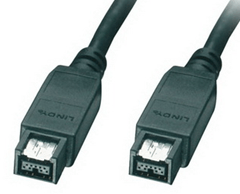
These types of USB are distinguishable by their blue colored inserts and usually equipped with a 3.0 logo. The data transfer rate of USB 3.0 is up to 5 Gbit/s, which is about 10 times faster than the USB 2.0 standard.

USB 3.0 has gradually become the new standard for USB devices by providing a lot of improvements over USB 2.0.
#Usb 2 vs usb 3 vs ethernet serial#
USB 3.0 was released in November 2008, which is the third major version of the Universal Serial Bus standard for interfacing computers and electronic devices. Nowadays, USB 2.0 is being replaced by 3.0 in many high-end motherboards. The maximum transfer speed of USB 2.0 device is up to 480 Mbps. It is the most common version of the USB standard that we use every day. USB 2.0 was released in the year 2000, which is also referred to as Hi-Speed USB. And USB 2.0 and USB 3.0 are commonly used on various electric devices.

There have been three generations of USB specifications: USB 1.0, USB 2.0 and USB 3.0. The USB standard was released in the year of 1996, currently maintained by the USB Implementers Forum. USB is brief for Universal Serial Bus, which is an industry standard that establishes specifications for cables and connectors for connection and power supply between computers, peripheral devices and other storage devices. USB 2.0 and USB 3.0: Definitionįirstly, I will give you a brief introduction about what is USB 2.0 and 3.0.
#Usb 2 vs usb 3 vs ethernet how to#
How to choose the right USB port for different usage? Well, to find out the answer, you need to learn the major differences between USB 3.0 and USB 2.0 clearly.

But as for their prices, the USB 2.0 device is much cheaper than the price of USB 2.0. Nowadays many new computers and other electric devices are using a USB 3.0 port instead of USB 2.0 due to its enhanced performance, superior speed and a higher efficiency power management.

USB-B 3.1 cables are not compatible with USB-B 2.0 ports.USB 3.1 is backwards compatible with USB 3.0 and USB 2.0, except in the following scenarios: USB 3.0 is also known as USB 3.1 Gen 1 (5Gbps). USB 3.0 is capable of data transfer speeds up to 5Gbps. USB 3.1 is also known as USB 3.1 Gen 2 (10Gbps). To achieve USB 3.1 transfer speeds, your USB host connection, cables, and device must all support USB 3.1. It is capable of data transfer speeds up to 10Gbps, and while it can use the USB-C connector type, it can also use a variety of other connector types. USB 3.1 is the most recent version of the USB (Universal Serial Bus) standard for connecting computers and electronic devices.


 0 kommentar(er)
0 kommentar(er)
